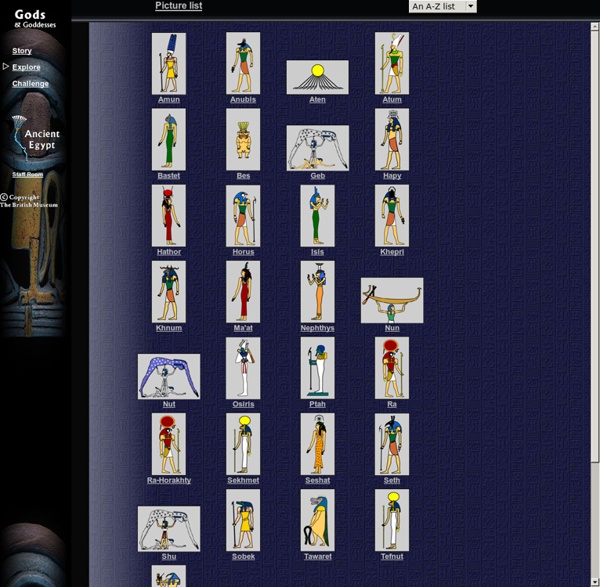



Guía didáctica | Antía y el escarabajo maldito En primer lugar, hay que señalar que el presente recurso toma como referencia el proyecto gamificado sobre Egipto titulado Cazadores de tumbas. Antía y el escarabajo maldito no es una ampliación de áquel porque comparten ciertos retos, pero sí una forma de ofrecer algo diferente, con otra trama, elementos, formato y temporalización. Aunque se puede abordar toda la introducción a la historia en la clase anterior a la realización del juego, una manera de conseguir una mayor sorpresa y curiosidad consistiría en enviar el tráiler inicial (vía email o como tarea dentro de plataformas educativas). Si hemos optado por la opción del envío del vídeo, al día siguiente en la clase, se contaría el resto de la historia y los detalles organizativos que aparecen en el apartado "Antía os necesita"; sección "La historia de Antía"En ese mismo momento podemos crear los seis grupos de alumnos. El tiempo total para completar con éxito el juego será de 50 minutos.
Discovering Ancient Egypt Rosicrucian Egyptian Museum in San Jose houses the largest collection of Egyptian artifacts on exhibit in western North America History - Ancient History in depth: Pyramid Challenge Ancient Egypt Egypt's impact on later cultures was immense. You could say that Egypt provided the building blocks for Greek and Roman culture, and, through them, influenced all of the Western tradition. Today, Egyptian imagery, concepts, and perspectives are found everywhere; you will find them in architectural forms, on money, and in our day to day lives. Pyramid of Khafre at Giza, c. 2520-2494 (right). This introduction will provide you with the primary filters to view and understand ancient Egypt. Longevity Ancient Egyptian civilization lasted for more than 3000 years and showed an incredible amount of continuity. While today we consider the Greco-Roman period to be in the distant past, it should be noted that Cleopatra VII's reign (which ended in 30 BCE) is closer to our own time than it was to that of the construction of the pyramids of Giza. Consistency & Stability Palette of Narmer, c. 3000-2920 B.C.E. Painted raised relief offering table in the Temple of Seti I at Abydos (New Kingdom). Geography
Sairas egyptiläinen haki apua eläimiltä | Historianet.fi Jos egyptiläinen kuuli huonosti, vaivan saattoi parantaa gasellin korvalla. Ebersin papyruksen mukaan lääkärin oli leikattava gasellilta korva ja tehtävä siitä, annek-kasvista, kilpikonnankuorilastuista ja päästäisen päästä tahna. Sitä paineltiin korvaan, minkä jälkeen potilaan pään ympäri kiedottiin liina. Sitten lääkärin piti kutsua ilmanjumala Shuta, jotta tämä lähettäisi parantavia voimia maan päälle. Possun silmät: Possun silmät palauttivat näön Ebersin papyruksessa kerrotaan lyijystä,hunajasta ja siansilmistä sekoitetun tahnan parantavan sokeuden. Otetaan kaksi kuivattua siansilmää, murskataan ne ja sekoitetaan murska punaisen lyijymönjän ja hunajan kanssa, niin saadaan lääke, joka karkottaa sokeuden. Kun lääkäri oli sekoittanut tahnan, hän siveli sitä potilaan silmiin. Egyptiläiset uskoivat, että sokeus oli jumalien rangaistus ihmiselle.
Sumerian Myths Sumerian civilization originated in what is now southern Iraq, just upriver from the mouths of the Tigris and Euphrates rivers. "Civilization" in this context means a settled town or city-dwelling people who possess a stable agricultural technology (including domesticated animals) and have developed a hierarchical system of social classes (peasants, laborers, slaves, craftsmen [smiths, masons, carpenters, potters, etc.], farmers, fishermen, merchants, doctors, architects, priests and temple attendants, bureaucrats, scribes, advisers, priest-kings). Since the climate of southern Iraq is hot and dry, agriculture requires an extensive irrigation system of canals and dikes. Often, the Sumerians wrote as if their civilization (agricultural techniques, cities, classes of people) came first, and people later. Map of Mesopotamian Archeological Sites (Oriental Institute, University of Chicago) Sumerian cities were close agglomerations of one or two story mud brick dwellings. Questions:1. 2. 3.
Muumioiden kapina: Egyptiläiset tekivät 70 päivän matkan manalaan | Historianet.fi Päivät 45-55: Säilöntä Kuivatuksen jälkeen ruumis peitettiin suojaavalla pihkakerroksella. Kun ruumis oli maannut 40 päivää natronsuolassa, sen iho oli tummunut ja kuivunut ja raajat olivat kuihtuneet tikuiksi ja se painoi vain noin neljänneksen alkuperäisestä painostaan. Nyt palsamoijien piti entisöidä kuivunut ruumis näyttämään taas ihmiseltä. Ensiksi ruumis pestiin alkoholilla, jotta viimeisetkin bakteerit saatiin hengiltä. Sen jälkeen ruumis voideltiin tuoksuvilla, kassiakanelilla ja mirhalla hajustetuilla voiteilla ja öljyillä. Voitelun jälkeen ruumis peitettiin kauttaaltaan lämpimällä seoksella, joka sisälsi muun muassa mirhaa, kamferiöljyä ja katajan pihkaa. Myöhemmin egyptiläiset alkoivat panna aikaisemmin kanooppiastioihin säilötyt sisäelimet takaisin ruumiin sisään.
1922: The discovery of Tutankhamun's tomb — in color In 1907, Egyptologist and archaeologist Howard Carter was hired by George Herbert, the 5th Earl of Carnarvon to oversee excavations in Egypt’s Valley of the Kings. Carter had built a reputation for scrupulously recording and preserving discoveries. Carter searched the valley for years with little to show for it, which drew the ire of his employer. In 1922, Lord Carnarvon told Carter that he had only one more season of digging before his funding would be ended. Revisiting a previously abandoned dig site at a group of huts, Carter started digging again, desperate for a breakthrough. On Nov. 4, 1922, his crew discovered a step carved into the rock. On Nov. 26, with Carnarvon at his side, Carter chipped open a small breach in the corner of the doorway at the end of the stairs.